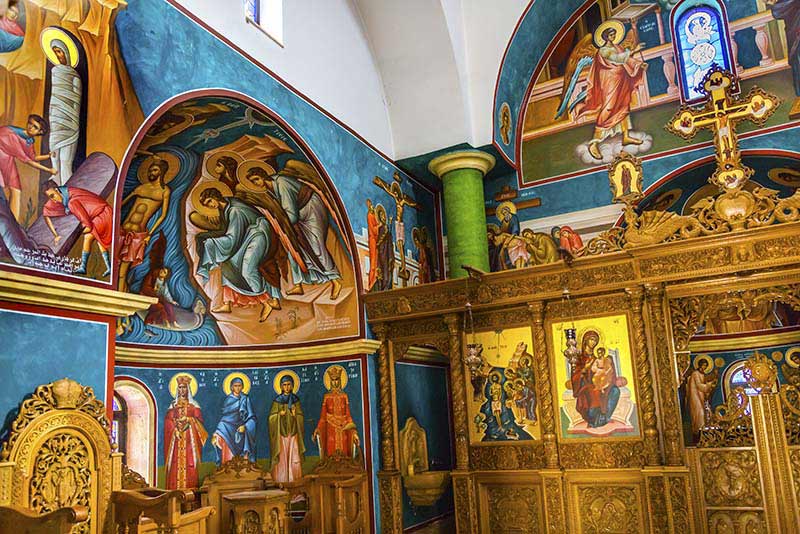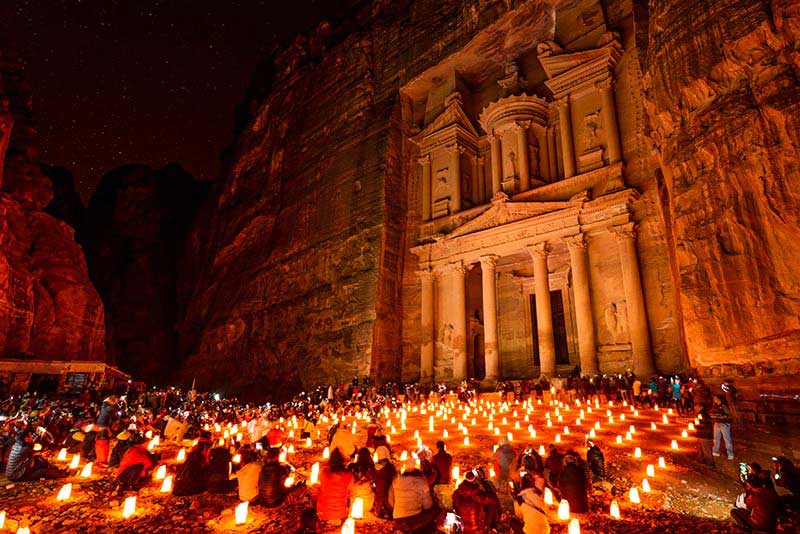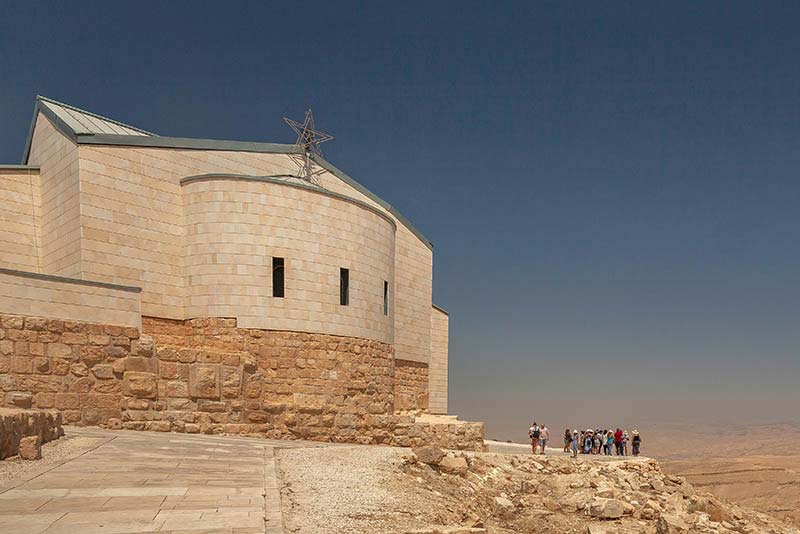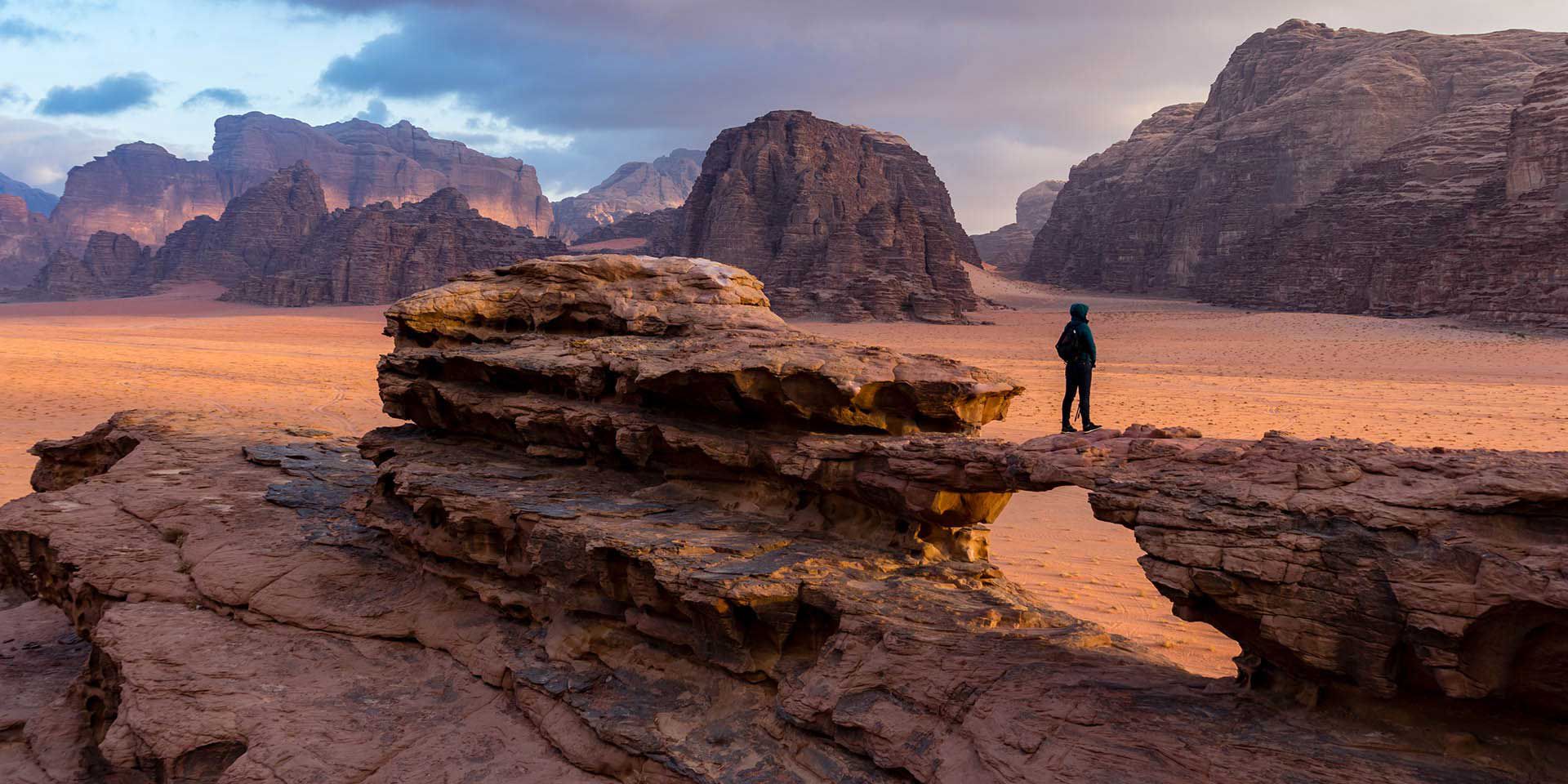By Andrew Raven
On a cool spring afternoon seven years ago, Anna Carroll of Nashville, Tennessee, was sitting on a bench with her feet dangling in the muddy waters of the Jordan River. Carroll was at a reed-filled bend in the waterway known as Bethany Beyond the Jordan. It was here, more than 2,000 years ago, that Jesus was said to have been baptized.
She remembered at that moment feeling a “profound” connection to her religion. “It’s one thing to live out your faith but it’s another to experience the history of your faith,” said Carroll, a devout Protestant who was on a 10-day tour of Jordan’s holy sites.
Jordan, home to dozens of biblical sites, is ramping up efforts to attract more faith-based travellers like Carroll. It’s part of a broader vision to bolster the tourism industry, which before the pandemic employed 50,000 people and accounted for 13 percent of Jordan’s gross domestic product. Today visitor numbers are about one-third of what they were two years ago as the pandemic has sharply curtailed travel.

The inside of the John Baptist Greek Orthodox Church, near the site called Bethany Beyond Jordan where Jesus is said to have been baptized. Photo by: Bill Perry/Shutterstock (2017)
For tourism to rebound, Jordan will need more than a receding pandemic. Experts believe that Jordan must make serious reforms in tourism-related businesses to attract more private investment.
“Right now, Jordan is just scratching the surface of its potential when it comes to tourism,” said Abdullah Jefri, IFC’s Country Manager for Levant Region. “With the right reforms, the industry could take off, creating the jobs so crucial to the country’s recovery from COVID-19.”
In 2019, the last year before the pandemic, 5.3 million people visited Jordan, a country of 10 million sandwiched between Israel, Syria, Iraq, and, Saudi Arabia.

A ceremony at night in the ancient city of Petra, at the site known as the Treasury, or Al Khazneh. Petra has been designated as a UNESCO World Heritage Site. Photo by: Hamdan Yoshida/Shutterstock (2014)
Its biggest draw has long been the ancient rock-hewn city of Petra, one of the Seven Wonders of the modern world. The country is also home to the Dead Sea, the lowest point in the world; Wadi Rum, a desert expanse featured in films from Lawrence of Arabia to The Martian; the coastal playground of Aqaba; Roman ruins; and a smattering of medieval castles built by Christian crusaders in the 12th and 13th centuries.
Despite those attractions, Jordan’s tourism industry has struggled to reach the heights of its neighbours, including Israel and Egypt, according to recent report from the World Bank and IFC. The Jordan Country Private Sector Diagnostic said that while the industry was growing in the years before the pandemic, it was not generating as many jobs and economic opportunities as it could have, in part because of red tape and rules that limited competition. The report called that a big missed opportunity for a country struggling with a nearly 25 percent unemployment rate.
In many ways, the challenges facing religious tourism in Jordan are emblematic of those confronting the industry as a whole.
Western Jordan is part of what’s known as the Holy Land, a place that is home to some of the origins of Judaism, Christianity, and Islam. Along with Jesus’ baptism site, the country boasts 33 other biblical sites. Those include Mt. Nebo, from where Moses is said to have first seen the Promised Land, and Machaerus, a hilltop fortress where John the Baptist was beheaded.

Tourists gather outside a memorial church on Mt. Nebo, where Moses is said to have first seen the Promised Land. Photo by : Cortyn/Shutterstock (2018)
Only about 15,000 Christian pilgrims visited Jordan annually in the years before the pandemic while some 300,000 faithful on average flocked to Israel.
While Jordan has “fantastic sites with a brilliant back story,” most don’t have the name recognition of places like Jerusalem and Bethlehem, says David Symes, the marketing manager of Amman-based Discovery Circle Tours.
That puts the onus on Jordanian tourism officials to showcase the country’s history, work that often involves painstakingly reaching out to church groups and religious leaders in places like the United States and United Kingdom.
“I think the religious market has huge potential,” said Symes, who used to work for the Jordan Tourism Board. “It’s just a matter of investment.”
The Jordan Country Private Sector Diagnostic found that the growth of the industry was stifled by onerous licensing rules and often steep capital requirements for new tour operators, which must sometimes provide bank guarantees of up to 75,000 Jordanian dinars ($105,000). With a foreign partner that skyrockets to 500,000 dinars, or $705,000, which has discouraged outside investment. At the same time, all-powerful industry associations often limit competition by blocking new companies from opening up shop.
The IFC-World Bank report found that removing those barriers would help propel the growth of not only faith-based travel, but also medical and adventure tourism, which the report called important “niches.” The growth of those areas would help create jobs, especially for women, who make up just 10 percent of tourism workers, and those in Jordan’s hinterlands, where there’s relatively little tourist infrastructure.

A view of the Milky Way at the edges of the Wadi Rum desert. Photo by: rayints/Shutterstock (2019)
Michael Nazzal, the chairman of the chain Mina Hotels, agreed with that assessment.
“Red tape is really a hindrance to the growth of the whole economy,” said Nazzal, the former head of Jordan’s national hotel association. “[Addressing] unemployment requires investment and investments cannot come with the red tape that is in Jordan.”
Major changes ahead for tourism industry
Late last year, Jordan launched a tourism strategy through 2025. A pillar of that plan is loosening the regulations that govern the sector. Jordan’s cabinet recently voted to abolish licensing requirements for tour operators and move toward what it calls a more liberal system based on “classifications.” It also plans to ramp up funding for Jordan’s tourism board, expand electronic visas, invest 5 million dinars in a tourism-related incubator fund, and work with communities and the private sector to ramp up investments.
Those changes, Jordan officials hope, will help the country attract 5.5 million visitors by 2025, which would be triple the number of tourists who came in 2021.
Industry players are hopeful those reforms will buoy and industry devasted by the pandemic. Long-term, they say the sector’s expansion is crucial to Jordan’s future.
“Without tourism, we don’t have much to sell,” said Nazzal, noting that Jordan does not possess the same petrochemical reserves as its neighbours. “Tourism is the engine of growth of our economy.”
In particular, many believe that medical tourism will be especially promising in the future. That’s in large part because of Jordan’s network of 700 clinics and hospitals, and the high caliber of its healthcare workers.
Jordan has crafted a strategy to entice foreign patients. Observers say that plan, combined with some world-class medical facilities and top-notch healthcare professionals, have the country poised to capitalize on rising healthcare costs and ageing populations in Europe and America.
“With the borders opening up and the pandemic [receding], Jordan is primed for healthcare tourism,” said Ahmad Abughazaleh, the chairman of Amman’s Abdali Hospital. “We have the infrastructure and we have the human capital.”
While officials are hoping to boost tourist numbers in the years to come, some visitors are happy that Jordan remains an under-the-radar destination. That includes Nashville’s Anna Carroll. One of the most vivid memories of her trip was spending sunset atop a near-empty Mount Nebo.
As a golden glow illuminated the Jordan Valley below, Carroll opened her bible and followed what were said to be the footsteps of Moses.
“You could just hear nature,” she said. “It was so peaceful.”
Andrew Raven is a writer at IFC.
Published in April 2022
